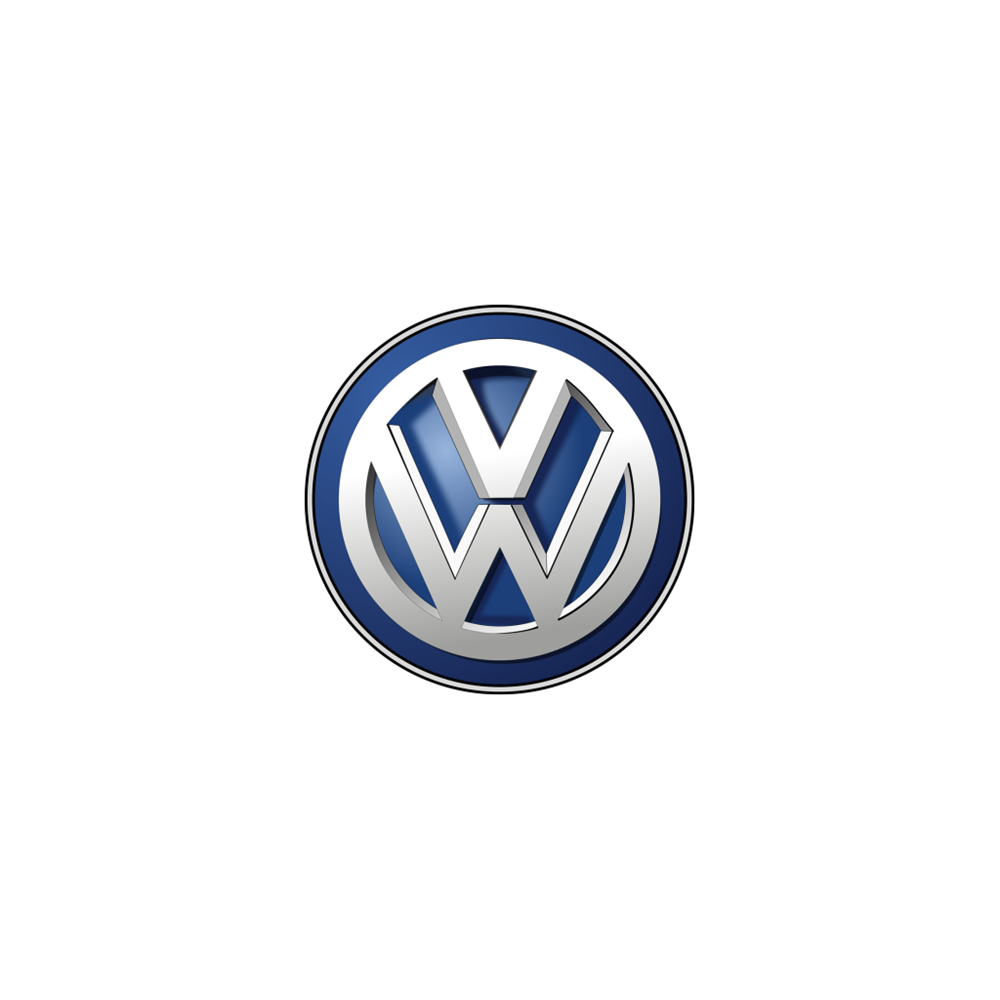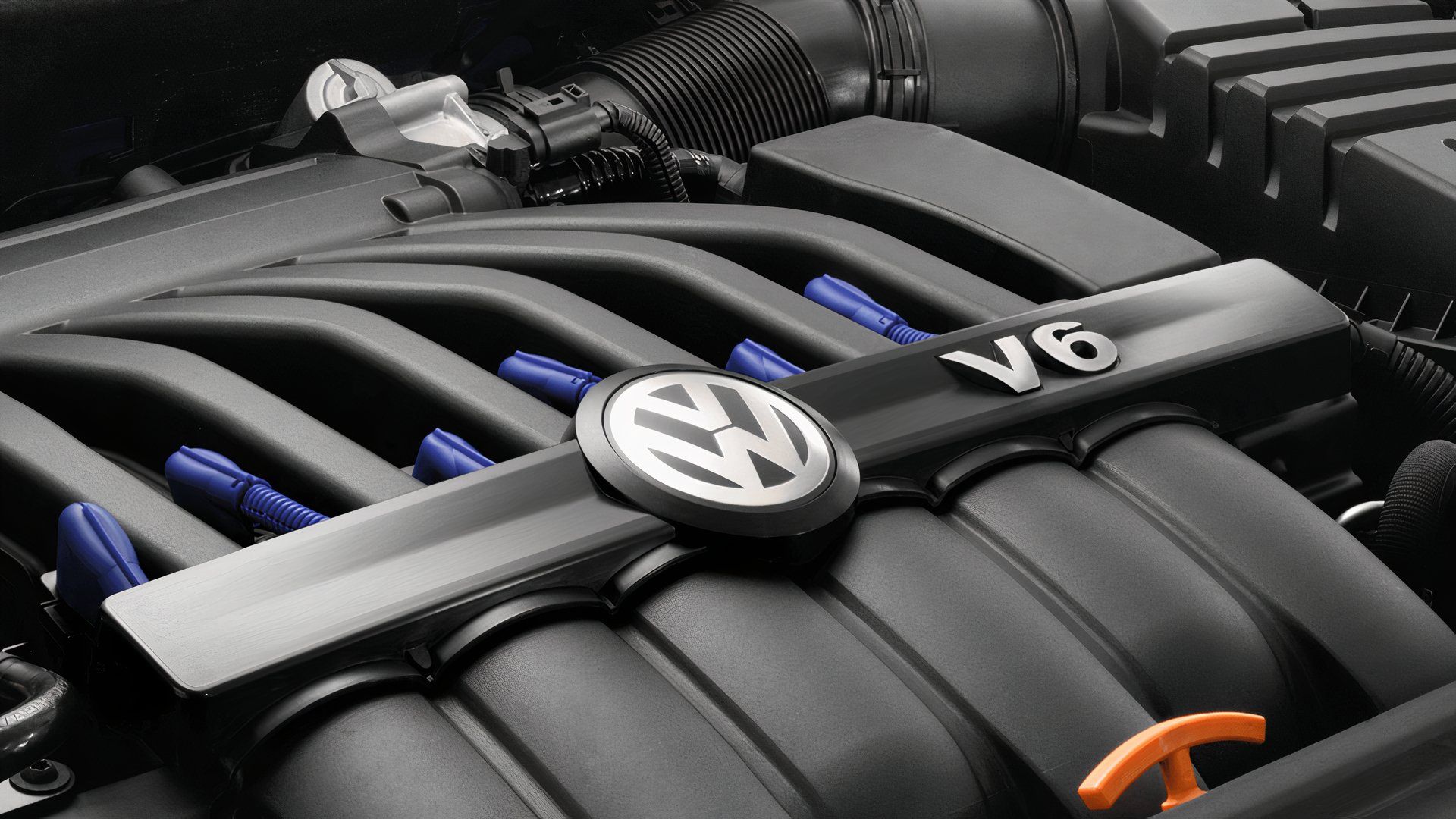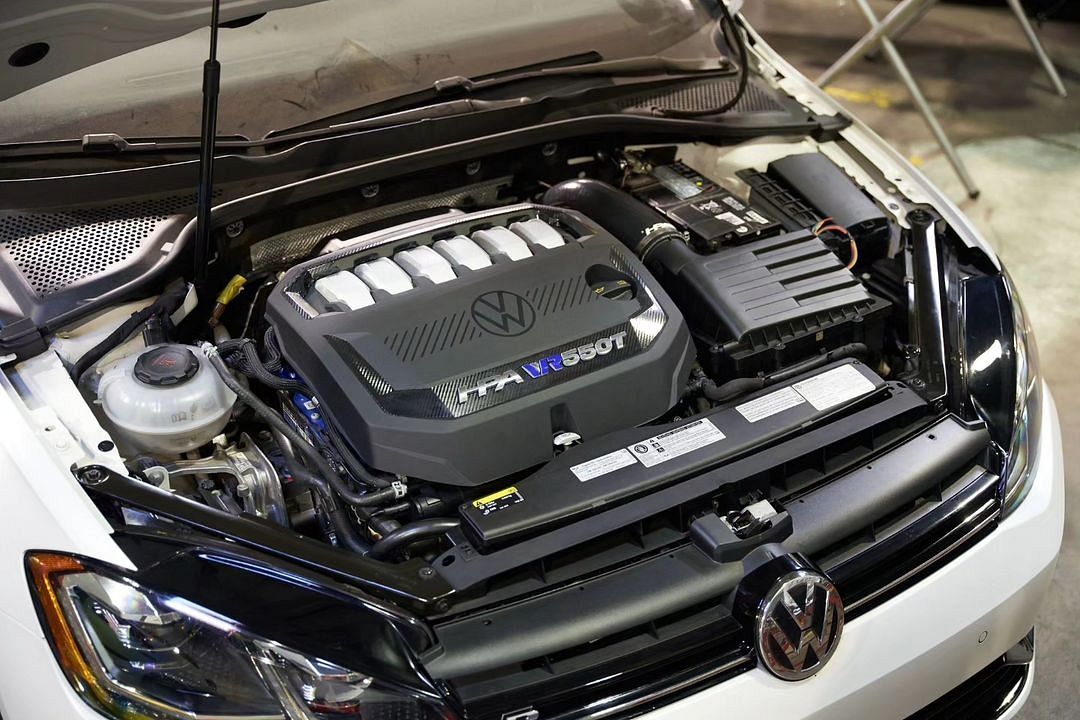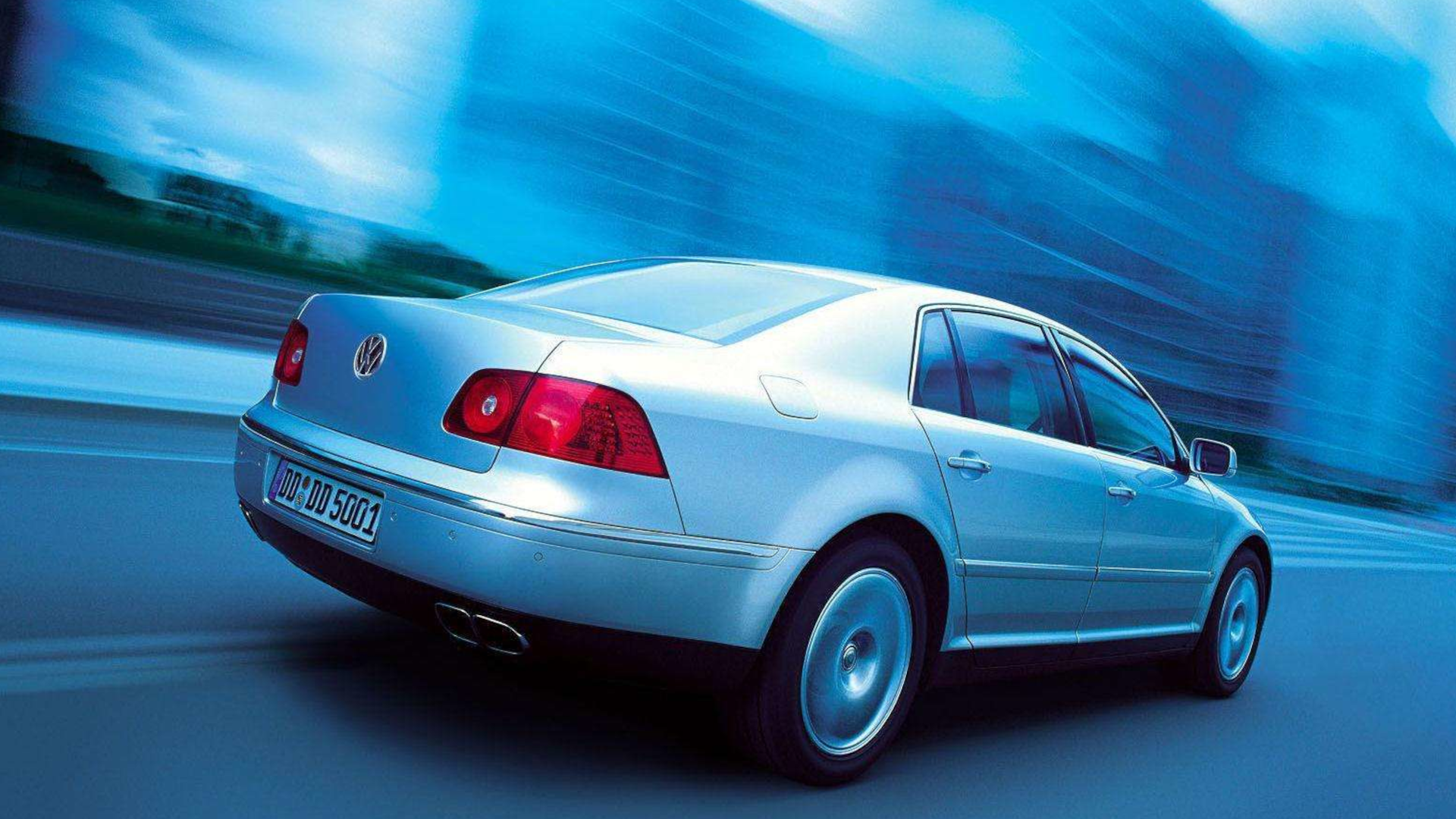It’s official, Volkswagen’s VR6 engine has been pronounced dead as of December 12, 2024, when the final narrow-angle engineering oddball reached the end of the line. Part of Volkswagen’s portfolio for 34 years, the VR6 was designed to provide V6 power within an engine bay intended to house a four-pot.

Volkswagen
Volkswagen is a mainstream automaker founded by the German Labour Front in 1937 as the “people’s car” company. Famous for the Volkswagen Beetle, Type 2 Bus, and modern classics like the Golf and Jetta, Volkswagen has emerged as one of the world’s largest automakers and a subsection of the larger Volkswagen Group, which either directly or indirectly owns controlling stakes in Porsche, Audi, Bentley, BMW, Skoda, Lamborghini, Bugatti, Rimac, Seat, and more.
- Founded
- 28 May 1937
- Headquarters
- Wolfsburg, Germany
- Current CEO
- Thomas Schaefer
The perfect solution for delivering VW cars engineered around a four-cylinder engine to power-hungry American drivers, the VR6 – in most applications – had a 15-degree angle between its cylinder banks versus the traditional 60-degree V6. That enabled trick features like a single cylinder head, but it also sounded cool and the VR6 badge on a Volkswagen grille became one of honor.
All information has been sourced from Volkswagen or reputable sources as noted below.
Volkswagen’s Famous VR6 Engine Saw Wide Use
Do a quick Google search of cars with a VR6 engine, and you’ll find quite a long list, and not just Volkswagens. The Porsche Cayenne is one example, not to mention the Ford Galaxy. So, we’ve put together this list of the six coolest cars ever to feature the unique VR6 powerplant. It is by no means exhaustive, but it is a good starting point for those who want to find out what all the VR6 fuss is about.
As is often the case, some of the most exciting cars that used the VR6 never made it to the US, like the ultra-rare New Beetle RSi. The short-lived Phaeton was offered on these shores, but not with the VR6 as it was in Europe. Others, like the B6 Passat in wagon form with the VR6, are the definition of a unicorn. Let’s dive in.

Related
The Rise And Fall Of The Beloved Volkswagen VR Engine
The legendary VR6 engine spawned a multitude of configurations in various sizes and cylinder counts over the years.
Volkswagen Corrado SLC
Successor to the original Scirocco, the hunchbacked VW Corrado was a star in SLC spec. Short for Sport Luxury Coupe, this was the model for enthusiasts. With 12 valves and a dual overhead cam setup, the 2.8L VR6 in these Corrados was hot enough to register a 6.8-second run to 60 mph when equipped with the standard manual transmission.
1992 Corrado SLC Specifications
|
Engine |
2.8L VR6 |
|---|---|
|
Power |
178 HP @ 5,800 RPM |
|
Torque |
177 LB-FT @ 4,200 RPM |
|
Transmission |
5-Speed Manual, 4-Speed Automatic |
|
0-60 MPH |
6.8-7.8 Seconds |
Though it was only sold from 1992 to 1994, these two-door hatchbacks left an impression thanks to their “Plus-Axle” front setup featuring a MacPherson strut design with a 20 mm sway bar and a wider track than the Golf platform it rode on. The speed-activated rear spoiler and 15-inch Speedline wheels just plain looked cool.

Add CarBuzz to your Google News feed.
Volkswagen Jetta GLX
Back in 1993, a four-door compact sports sedan with actual refinement generally required a BMW or Audi. But Volkswagen helped change that with the Mk III Jetta in GLX duds. Like its Corrado cousin, these range-topping Jettas had a 2.8L VR6 up front, in this case producing 172 horsepower and 173 lb-ft of torque.
Sweet 15-inch multi-spoke BBS wheels came standard, as did a 2,815-pound curb weight, bigger front brakes versus the lesser GL and GLS trim lines, and disc brakes out back instead of drums on base models. This Jetta generation is credited with bringing Volkswagen back from the brink in the North American market and the VR6-powered GLX variant is hands-down the coolest Mk III model of them all.

Related
HPA Motorsports Begins Production Of 50-Unit VW Golf R With VR6 Turbo Engine
HPA is giving the Golf R loads more grunt and, most importantly, Wookie noises!
Volkswagen New Beetle RSi
The Beetle RSi is one of the rarest Volkswagens to ever run a VR6. Swapping the dash-mounted flower vase for billet aluminum window cranks, fat fender flares, and 3.2L VR6 good for 221 hp at 6,200 rpm and 236 lb-ft of torque at 2,000 rpm, the New Beetle RSi was essentially a road-going version of the New Beetle Cup racing cars.
New Beetle RSi Highlights
- Limited to 250 units
- Close-ratio 6-speed manual
- 4Motion all-wheel drive
- Remus dual exhaust
- 18″ OZ Superturismo wheels
Only 250 were ever built in this RSi, or RennSport injection, spec, and all featured a heavily revised suspension designed for track use to go with unique front and rear fascias and a huge rear spoiler. All-wheel drive (AWD) was part of the deal, as were Recaro front bucket seats and a bright orange interior.
Volkswagen Phaeton
The Phaeton is a car that remains perplexing from a viability perspective as it competed directly against the Audi A8, a fellow member of the VW clan. Regardless, it was an epic luxury liner with relatively wild features like massaging front seats, adaptive air suspension, and a hand-built assembly provenance from a German factory that also produced the Bentley Flying Spur of the same era.
Americans only got access to the Phaeton with a 4.2L V8 or a 6.0L W12, but other markets, like the UK, could select a 3.2L VR6 mill making 238 hp and 233 lb-ft of torque. A heavy car, 0-62 mph required 9.2 seconds with the tiny VR6, but it remains a fascinating vehicle from the long VR6 engine history.

Related
The One Car Volkswagen’s W12 Engine Couldn’t Save
The W12 closes a chapter in Volkswagen Group’s book, including one of the most well-engineered failures in automotive history.
Volkswagen R32
Before the Golf R, there was simply the R32. Debuting in 2003 with the Mk IV Golf, these hottest of hatches were the first production car in the world to offer a dual-clutch automatic transmission, though not in the U.S. Here, the only spec was a 6-speed manual transmission sending power to all four wheels via a Haldex 4Motion system.
The 3.2L VR6 power plant was rated for 240 hp at 6,250 rpm and 236 lb-ft of torque at 2,800 rpm, good for a 0-60 mph run of 5.9 seconds. The first production Golf to wear a Volkswagen Racing badge, the OG R32 boasted higher spring rates, a multi-link rear suspension, a lowered ride height, and larger front brakes versus the period GTI with its torsion-beam axle rear end.
Volkswagen Passat Wagon
The B6 Volkswagen Passat Wagon in VR6 trim was unusual among this crowd for its 3.6L displacement and extra-narrow 10.6-degree angle between banks. Sold between 2006 and 2010, the 3.6 VR6 model made a stout 280 hp and 265 lb-ft of torque. It featured variable valve timing and a 12.0:1 compression ratio.
4Motion AWD was optional, but a 6-speed automatic with Tiptronic shifting was standard. Other standard fares included adaptive bi-xenon headlights, a sunroof, heated front seats, and sport-tuned suspension. Speed was a natural byproduct here, with VW quoting a 0-60 mph time of 6.2 seconds. Granted, that’s for the sedan and the wagon is likely a touch slower, but it’s so much cooler. An ideal VR6-powered Volkswagen.
Sources:
Volkswagen
,
Car and Driver
,
Motor Trend










